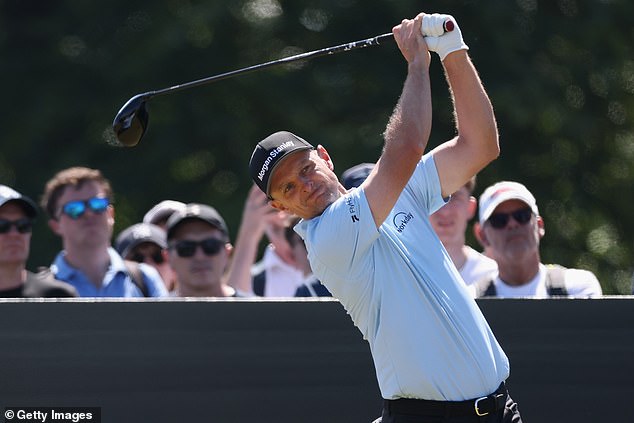Justin Rose Advocates for Extended Golf Major Calendar
Introduction
Renowned golfer Justin Rose recently shed light on a pressing issue in the world of professional golf: the increasingly condensed schedule of major tournaments. As the golfing community prepares for the upcoming Open Championship, which runs from July 15-18, Rose has voiced strong opinions about the optimal timing of the sport’s major championships. His perspective shines a spotlight on the challenges and potential solutions associated with the golf major calendar.
Current State of Major Tournaments
The current golf landscape has seen the four major tournaments—The Masters, PGA Championship, U.S. Open, and The Open—squeezed into a mere 14-week window. This tight schedule began with the PGA Championship’s shift from August to May in 2019. While the new calendar format aimed to create a more balanced annual schedule, it has garnered criticism for placing undue pressure on players to perform at their peak within a limited timeframe.
The Stress of a Congested Schedule
For players like Rose, this schedule means heightened stress and an intense focus on form over a short period. Competing in these prestigious events with just weeks, or in some cases days, to prepare can make or break a player’s season. The current model not only impacts individual performances but also raises questions about the overall competitiveness of the sport.
Rose’s Insights on the Calendar
Justin Rose articulated his concerns definitively, declaring, "They are… too condensed as they are now." He expressed a desire to reshape the calendar to alleviate some of the built-up pressure. "If I was given a blank sheet of paper and asked to work out the year, I think the majors are too condensed as they are now," he pointed out.
Implications of a Compressed Calendar
The implications of a compressed calendar extend beyond mere performance anxiety. For one, it leaves an extended gap of about eight months between the close of one tournament season and the beginning of the next. This significant hiatus raises concerns about player consistency and fan engagement, as followers of the sport might lose interest during the lengthy off-season.
Rose’s Experience Leading up to the Open
Discussing his own recent experiences, Rose highlighted the limited competition between major tournaments. Since finishing second at the U.S. Open in June, he has only participated in the Scottish Open before preparing for The Open. This sparse schedule underscores the realities faced by professional players as they navigate a demanding and compact tournament calendar.
Suggestions for Improvement
So, what solutions could be implemented to address these issues? Rose proposes that extending the major calendar by at least another month could ease the pressure on players and enhance the overall experience for audiences. By allowing for more time between the tournaments, both players and fans would benefit from a more balanced and less frantic season.
The Historical Context of Golf Major Tournaments
Historically, golf has been characterized by a leisurely pace, granting players ample time to recharge and refocus between tournaments. The current model, with its frenzied pace, may contradict the sport’s rich traditions. A strategic extension could allow golf to return to its roots, emphasizing both skill and strategy while preserving the thrill of competition.
Fan Engagement and the Global Golfing Community
Moreover, a stretch in the major calendar can heighten fan engagement. Golf enthusiasts would have more opportunities to anticipate and celebrate the majors, driving viewership and attendance. It fosters a deeper connection between athletes and their supporters, enriching the fan experience and ultimately benefiting the sport’s popularity.
Conclusion
In conclusion, Justin Rose’s advocacy for an extended golf major calendar resonates with many in the professional realm. As the golfing world evolves, it’s crucial to consider the balance between competitiveness and player wellness. Perhaps by heeding Rose’s insights regarding the structure of the golf calendar, the sport can enhance the experience not only for players but also for its passionate community of fans. As discussions continue about the future of major tournament scheduling, the call for a more spaced-out calendar could very well mark a significant turning point in the world of golf.


